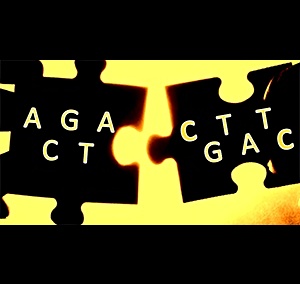
DNA strands must be broken up into smaller parts and reassembled, rather like a jigsaw puzzle, for specific types of analysis. The Opera program incorporates a new algorithm to improve the accuracy of reassembling DNA fragment data.
A better knowledge of human DNA sequences can improve our understanding of diseases and the mechanisms that trigger them. However, the full DNA strand contains a vast amount of genetic information, which is often too large and complex to be read in its entirety. To overcome this problem, scientists have devised tools that break the full strands into smaller fragments to ease the reading process, as well as systems to reassemble the data in their proper order.
Niranjan Nagarajan at the A*STAR Genome Institute of Singapore and co-workers have now created a program called Opera that could speed up the DNA reading process. Opera automatically finds the best way to piece together sequence fragments of DNA into longer strands. Their software produces fewer errors and has better overall assembly quality than ever before.
The process of assembling DNA fragments is akin to solving a giant jigsaw puzzle. Due to the sheer scale and complexity of data analysis, with datasets that are hundreds of gigabytes in size, computer programs are required to handle the assembly process. Even so, there are problems with accuracy within these computer-generated sequences, because the programs operate using generalized rules of thumb and look for overlapping ends of fragments in order to link the pieces back together. For large groups of fragments, it is difficult to perform such a search in very repetitive genetic code, and the resulting strands contain errors.
Nagarajan and co-workers created the Opera algorithm to optimize the ordering — or ‘scaffolding’ — of DNA strands, replacing the traditional generalized rules. “We designed an algorithm that exploits the features of real datasets and runs efficiently,” says Nagarajan. “With Opera you have a guarantee that natural optimization criterion will be met, so you know what you can expect.”
The algorithm calculates a scaffolding solution for each set of DNA fragments, and ‘explains’ its linking choices as it progresses, showing how different options were investigated and eliminated. This provides the user with a clearer picture of the scaffolding and the progress achieved by the program.
“The robustness of Opera arises from the fact that it does not rely on ad-hoc criteria in its algorithm,” says Nagarajan. “Instead it does an exhaustive search of all possibilities.”
Nagarajan and his co-workers are continuing to improve the program for more complex datasets. They are working towards a toolset for ‘perfect assembly’, or in other words, one that reconstructs the genome without any errors.
The A*STAR-affiliated researchers contributing to this research are from the Genome Institute of Singapore.



